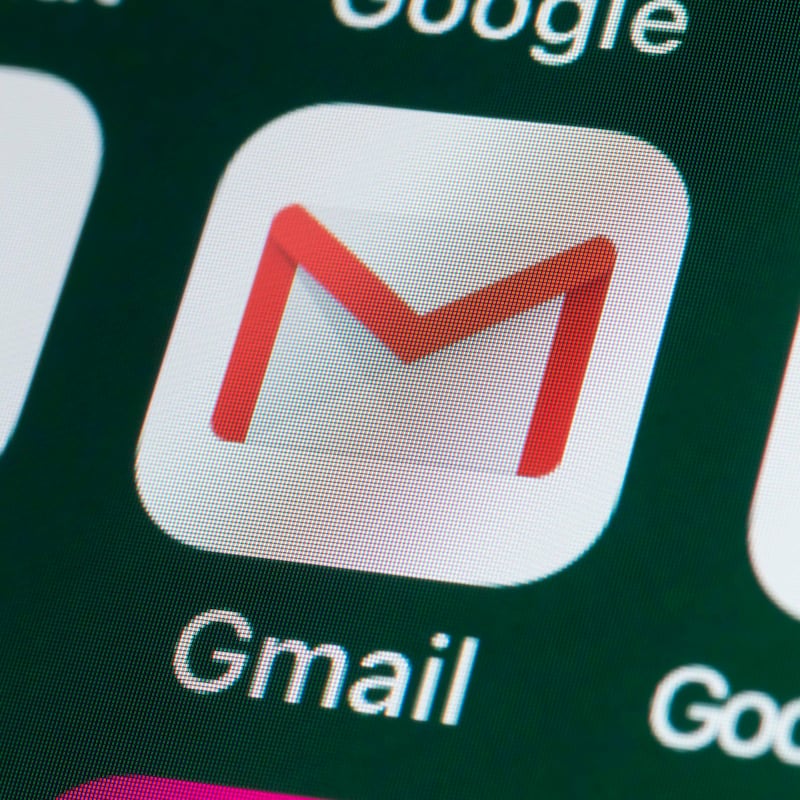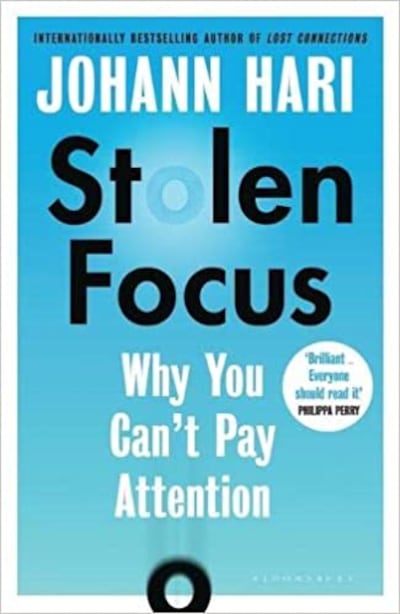Our ability to pay attention and focus is in free-fall. The average college student now focuses on any one task for just 65 seconds. The average office worker focuses on any one task for just three minutes.
I was so concerned by this slow acid being poured on our attention that for my new book, I spent three years researching the reasons this is taking place, interviewing more than 200 of the leading experts, and travelling all over the world for answers – from Miami to Moscow to Melbourne. I learned that we have been thinking about this problem in way too simplistic a way.
I basically had two responses when I felt my own attention fraying – I either blamed myself, or I blamed my phone. I thought I was lazy, or I thought my devices had hijacked me. In fact, what I learned is that there are 12 big causes of our attention crisis – ones that run deep in the way we live.
To get our brains back, I came to believe we need to adopt two parallel strategies. The first is to protect ourselves and our children, as individuals, as much as possible, from the forces stealing our focus. The second is to band together and take on the bigger forces invading our attention, to stop them. Both are essential if we are going to rescue our super-power as a species – our ability to focus and think deeply.

I think it’s easier to see these twin tracks if we look at one of the forces we can all see is damaging our attention: our current relationship with our technology.
I learned from Molly Crockett, a leading professor of psychology at Yale University, that there's a crucial technique you can use when you want to restrain yourself at a personal level from doing something harmful. It's called "pre-commitment".
This is where you have a goal you want to achieve, but you know you might crack later. You don’t want to eat the Pringles. You don’t want to check your phone during your child’s school play. But you do it anyway. To prevent that happening, you can take steps to restrict your own ability to make a bad choice in the future: you can “pre-commit”.
To follow her advice, I bought something called a K-Safe. It’s a little plastic safe that opens at the top. You put your phone in it, and you put the lid on, and you twist the top to determine how long you want to shut your phone away for. Then it’s gone locked away, so you’d have to smash it with a hammer to get the phone out.
I also installed on my laptop an app called Freedom, that will cut you off entirely from the internet for however long you tell it to. When you use these two techniques, you prevent the future you from cracking, changing your mind, and clicking onto Twitter.
The factors that are damaging our focus run very deep. They are even in the food we eat and the air we breathe
These techniques really helped me – I don’t think I could have finished my book without them. But up to now, almost all the books that talk about our attention crisis focus on individual solutions like these; they have been, in effect, digital diet books.
I think we have to start levelling with people. Individual solutions can make a real difference. I am strongly in favour of them. The many I have pursued - and that I describe in my book - have greatly improved my life. But they will only get you so far.
At the moment, we are living in an environment that is systematically invading our attention. The factors that are damaging our focus run very deep. They are even in the food we eat and the air we breathe.
On their own, personal changes will not rescue our attention. We have to band together and take bigger steps to stop the forces that are trashing our focus. I learned a lot about how we might do this in Silicon Valley, where I met many of the people who have designed key aspects of the technology to which we twitch and twerk our minds 24/7.
Over three years, I interviewed many times the former Google engineer Tristan Harris, who subsequently became a viral star in the documentary The Social Dilemma. He explained to me that when Gmail was first being invented, he was assigned to work on developing the app.
One day, he would hear an engineer excitedly saying: “Why don’t we make it buzz your phone every time we get an email? Everyone would be thrilled” – and a few weeks later, phones began to buzz in pockets, and more people found themselves looking at Gmail many more times a day. He heard those vibrations everywhere he went like a kind of digital birdsong – and realised that he and his team had done that, and it was happening everywhere.

Tristan realised they were responsible for more than 10 billion interruptions to people’s day, every day – and he knew that once you are interrupted, it takes on average 23 minutes to get back to the same level of focus you had before you were disturbed.
He told one audience later: “I want you to imagine walking into a room. A control room, with a bunch of people, a hundred people, hunched over a desk with little dials – and that that control room will shape the thoughts and feelings of a billion people. This might sound like science fiction, but this actually exists right now, today. I know, because I used to work in one of those control rooms.”
Even as he worked on it, he would obsessively check his own email, making him less focused.
One day, his friend James Williams – another Google strategist – addressed an audience of hundreds of leading tech designers and asked them a simple question. “How many of you want to live in the world you are designing?” There was a silence in the room. People looked around them. Nobody put up their hand.
The people who had worked at the heart of this machine told me that in order to understand why social media, at the moment, is so bad for your attention, you need to know one thing. The fact that it wrecks your attention is not inherent to social media itself. It’s happening for a more specific reason.
Your distraction is their fuel. So they learn what most engages you, and they target it ruthlessly
Every time you open Facebook, these companies make money, in two ways. The first is obvious – you scroll through your feed, and see ads. The second is more subtle – and much more valuable. Every time you send a message or status update on Facebook, or Snapchat, or Twitter, and every time you search for something on Google, everything you say is being scanned and sorted and stored. These companies are building up a profile of you, to sell to advertisers who want to target you.
For example, starting in 2014, if you used Gmail, Google would scan through all your private correspondence, to generate an “advertising profile” exactly for you. If (say) you email your mother telling her you need to buy nappies, Gmail knows you have a baby, and it knows to target ads for baby products straight to you. If you use the word “arthritis”, it will try to sell you arthritis treatments.
Every time you put down your phone, they lose both these revenue streams. So their products are designed, deliberately, to maximally capture and hold your attention. The cleverest engineers in the world spend all day figuring out how to get you to switch tasks to their site.
Your distraction is their fuel. So they learn what most engages you, and they target it ruthlessly. They train you to crave the rewards their sites offer. So as Tristan put the problem plainly when he testified before the US Senate: “You can try having self-control, but there are a thousand engineers on the other side of the screen working against you.”
The deepest solution, I was told by many people who had been at the heart of these companies, is to go to the heart of the problem – this business model itself. As the leading designer Aza Raskin argued to me, these corporations shouldn’t be allowed to invade your attention and sell it to the highest bidder because it is “anti-human”. It should be outlawed.
This sounded drastic when I first heard it, but I remembered that when we discovered that painting your home with leaded paint severely harmed kids’ attention, we banned it. You still paint your home, just without the attention-wrecking ingredients.

There are alternative business models for social media that don’t depend on figuring out the weaknesses in your attention and constantly targeting them. There are several feasible alternatives. We could pay a small monthly subscription fee. Or these companies could be owned by the public, as with sewage systems across the world. Just as we all own the sewage pipes to prevent cholera outbreaks, we might want to own the informational pipes to prevent the attentional equivalent of cholera.
Once the financial incentives change, social media can be designed to heal your attention, not hack it.
There are all sorts of ways that can be done – but none will get off the drawing board until the incentives are right.
Ask yourself: Do you value attention? Do you want your kids to be able to focus?
Of course, these companies want us to continue simply to blame ourselves, and to fiddle with our habits while they design more and more inventive ways to invade and steal our focus. But it doesn’t have to be this way.
“Sometimes I hear people say it’s too late to make certain changes to the web or platforms or digital technology,” James Williams told me. But the axe, he added, existed for 1.4 million years before anybody thought to put a handle on it. The web, by contrast, “is less than 10,000 days old”.
We are, I realised, in a race. On one side, there is the rapidly escalating power of invasive technologies, which are figuring out how we work and fracking our attention. On the other side, there needs to be a movement, demanding technologies that work for us, not against us.

At the moment, the movement for humane technology consists of a few brave people. We all need to decide – are we going to join them and put up a fight? Or are we going to let the invasive technologies win by default?
This also goes for the other 11 factors that are ruining our ability to pay attention. Ask yourself: Do you value attention? Do you want your kids to be able to focus? If you do, we have to take steps in our own lives – and we need to band together to fight to reclaim our minds.
Stolen Focus – Why You Can't Pay Attention is published by Bloomsbury. You can read Karlin Lillington's review of it here
Johann Hari is a British writer who has authored two best-selling books on drugs and depression














